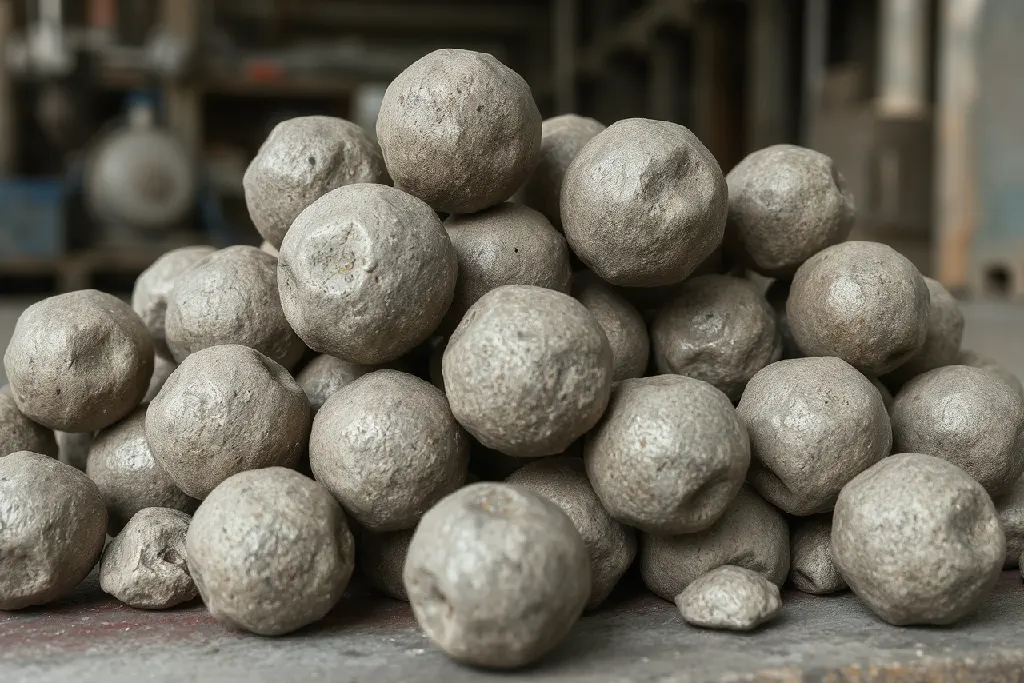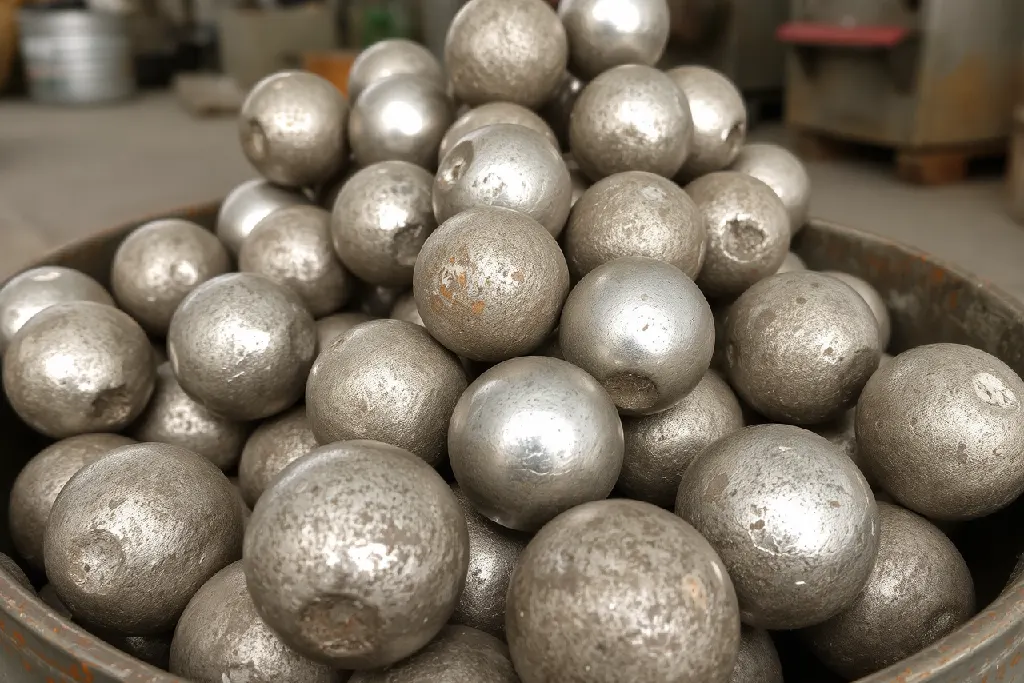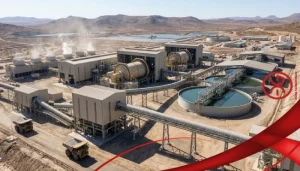Grinding balls are essential components in various industries, particularly in mining, cement production, and power plants. These balls help in grinding materials into finer particles, ensuring optimal performance in the grinding process. However, not all grinding balls are created equal. The two primary types of grinding balls are cast grinding balls vs. forged grinding balls. The choice between these two depends on various factors, including durability, wear resistance, cost, and application requirements. This article delves into the differences between cast and forged grinding balls, their production processes, advantages, disadvantages, and applications.
Understanding Cast Grinding Balls

The Decisive Factor: A Look at Internal Grain Structure
To truly understand the forged vs cast difference, we must look at the microscopic level. The grain structure of a metal dictates its strength, toughness, and resistance to wear.
In a cast product, the grains are typically large and arranged randomly, much like a loose pile of different-sized rocks. This structure can contain microscopic gaps (porosity) and non-metallic inclusions that act as internal stress points.
In a forged product, the intense pressure of the forging process breaks down the large, cast-like grains and forces them to recrystallize into a much finer, more tightly packed structure. These fine grains are also elongated and aligned in the direction of the metal flow during shaping. This refined and oriented grain structure is the signature of a forged product and the reason for its superior mechanical properties. The discussion about forged vs cast quality always comes back to this fundamental difference in grain structure.
Production Process
Cast grinding balls are manufactured by melting scrap metal, pig iron, and other alloying elements in a furnace. The molten metal is then poured into molds to form grinding balls of various sizes. After casting, the balls undergo heat treatment processes such as quenching and tempering to enhance their hardness and durability.
Characteristics of Cast Grinding Balls
- Surface Hardness: Cast grinding balls typically have a higher surface hardness compared to forged ones, thanks to the heat treatment process.
- Internal Porosity: Due to the casting process, these balls may have internal defects such as porosity or shrinkage cavities, which can affect their durability.
- Brittleness: Cast grinding balls tend to be more brittle than forged balls, increasing the risk of breakage under high-impact conditions.
- Wear Resistance: The wear resistance of cast balls is generally lower compared to forged balls, especially under high-stress conditions.
Advantages of Cast Grinding Balls
- Lower Manufacturing Cost: The production process is simpler and cost-effective compared to forging.
- Consistent Hardness: Through controlled heat treatment, cast balls can achieve a uniform hardness distribution.
- Customization: Manufacturers can easily adjust the chemical composition to suit specific grinding conditions.
Disadvantages of Cast Grinding Balls
- Higher Brittleness: More prone to breaking under high impact.
- Presence of Defects: The casting process may introduce internal porosity and other imperfections.
- Shorter Lifespan: Cast grinding balls typically wear out faster than forged balls in high-impact environments.
Understanding Forged Grinding Balls

Production Process
Forged grinding balls are produced by heating a steel billet or rod to a high temperature, then using mechanical force to shape it into a spherical form. The balls are then heat-treated to achieve the desired hardness and strength.
Characteristics of Forged Grinding Balls
- Higher Toughness: Forged grinding balls exhibit greater toughness, reducing the likelihood of breakage.
- Finer Grain Structure: The forging process refines the grain structure, improving mechanical properties.
- Lower Porosity: Unlike cast balls, forged balls have minimal porosity, making them more durable.
- Better Wear Resistance: Due to their high toughness, forged grinding balls wear out more slowly than cast balls.
Advantages of Forged Grinding Balls
- Higher Impact Resistance: Less likely to break under heavy loads.
- Longer Service Life: Forged balls last longer in grinding operations.
- Better Structural Integrity: The absence of porosity improves overall strength and durability.
Disadvantages of Forged Grinding Balls
- Higher Manufacturing Cost: The forging process requires specialized equipment and more energy.
- Hardness Variability: Some forged balls may have a less uniform hardness distribution compared to cast balls.
Differences Between Cast and Forged Grinding Balls
|
Feature |
Cast Grinding Balls |
Forged Grinding Balls |
|
Production Process |
Casting molten metal into molds |
Heating and hammering metal into shape |
|
Hardness |
Generally higher surface hardness |
More uniform hardness distribution |
|
Toughness |
More brittle |
Higher toughness, less likely to break |
|
Porosity |
May contain internal porosity |
Minimal or no porosity |
|
Wear Resistance |
Moderate |
Higher, leading to longer lifespan |
|
Cost |
Lower |
Higher due to energy-intensive process |
|
Application |
Suitable for lower-impact grinding |
Ideal for high-impact environments |
Mechanical Properties: A Forged vs Cast Performance Showdown
The difference in grain structure directly translates into measurable differences in performance. In nearly every key metric, the refined structure of a forged product offers a distinct advantage. This section of the forged vs cast analysis highlights why.
Strength and Impact Toughness
The fine, aligned grain structure of forged steel creates a material with significantly higher tensile strength and impact toughness. In the high-impact environment of a grinding mill, this is critical. Each grinding ball must withstand thousands of collisions with other balls and the raw material. The inherent defects in cast products can lead to brittle failure and cracking upon impact. Forged balls, with their superior toughness, can endure these forces without fracturing, ensuring a longer operational life. This durability is a key advantage in the Differences of cast and forged grinding ball comparison.
Wear Resistance and Durability
The dense, non-porous nature of forged steel results in superior wear resistance. In casting, micro-porosity at the surface can lead to accelerated wear and spalling (the chipping or flaking of the surface). The uniform hardness and refined structure of a forged ball ensure that it wears down evenly and slowly. This consistent wear profile is a major consideration in the Differences of cast and forged grinding ball choice for grinding media. A lower wear rate means less media needs to be added to the mill, reducing costs and downtime. The forged vs cast decision has a direct impact on media consumption rates.
Consistency and Reliability
The forging process produces a product with highly reliable and repeatable properties. The casting process, due to variables in cooling rates and molten metal flow, can result in inconsistencies from one ball to the next. For a mill operator, consistency is key to maintaining a stable and predictable grinding circuit. The forged vs cast evaluation must account for this reliability factor. When you choose forged media, you are choosing a product with predictable performance, which is essential for process optimization.
Applications of Cast and Forged Grinding Balls
When to Use Cast Grinding Balls
- Cement Plants: Due to lower impact loads, cast grinding balls are often used in cement mills.
- Coal Mills: Where grinding occurs under relatively mild conditions.
- Chemical Industry: Where precise chemical composition is required.
When to Use Forged Grinding Balls
- Mining Industry: High-impact grinding in mineral processing benefits from the toughness of forged balls.
- Power Plants: Used in coal grinding applications where durability is crucial.
- Ball Mills in Hard Rock Mining: Forged balls provide better performance in environments with significant mechanical stress.
When deciding between cast grinding balls vs. forged grinding balls, several factors must be considered, including cost, application, and desired durability. The differences between cast and forged grinding balls include variations in manufacturing processes, hardness, porosity, and impact resistance. While cast balls offer a lower-cost solution with consistent hardness, forged balls provide superior toughness and wear resistance, making them ideal for demanding applications such as mining and power generation. Understanding these key differences ensures optimal grinding efficiency and cost-effectiveness in industrial applications.
Why This Matters for Your Mill: The Forged vs Cast Impact
Ultimately, the technical differences between forged vs cast products only matter if they translate into real-world operational benefits. For grinding mill operations, the choice has a profound impact on efficiency and profitability.
High-performance forged grinding balls, like those expertly manufactured by Alpha Grinding Media, deliver tangible advantages. Their superior toughness and wear resistance mean they maintain their spherical shape for longer. Deformed or broken media (a common issue with inferior cast products) can drastically reduce grinding efficiency. A consistent ball shape ensures a proper cascading action and an efficient grinding surface.
Furthermore, the lower wear rate of forged media directly translates to a lower cost-per-ton of material milled. While the initial purchase price might be a factor in the Differences of cast and forged grinding ball decision, the Total Cost of Ownership (TCO) is almost always lower for high-quality forged media due to reduced consumption and less frequent mill stoppages for replenishment. The entire forged vs cast debate for industrial applications must be viewed through this lens of long-term value.
Conclusion
Understanding the differences of cast and forged grinding ball is crucial for selecting the most suitable option for various industrial applications. While cast grinding balls offer cost efficiency and are ideal for specific environments, forged grinding balls provide superior strength, durability, and impact resistance, making them the preferred choice for heavy-duty operations. The differences cast and forged grinding ball influence factors such as wear resistance, toughness, and overall performance in grinding processes. To learn more about these differences and find high-quality grinding media solutions, visit Alpha Grinding Media.
FAQs
1. What are the main differences between cast and forged grinding balls?
The primary differences of cast and forged grinding ball lie in their manufacturing process and mechanical properties. Cast grinding balls are made by pouring molten metal into molds, resulting in a harder but more brittle structure, whereas forged grinding balls are shaped under high pressure, providing greater toughness and impact resistance.
2. Which industries commonly use cast and forged grinding balls?
Cast grinding balls are typically used in cement plants and low-impact mining operations due to their cost-effectiveness. Forged grinding balls, on the other hand, are preferred in mining, power plants, and heavy-duty grinding applications where high strength and durability are essential.
3. How does wear resistance differ between cast and forged grinding balls?
Forged grinding balls generally offer better wear resistance due to their refined grain structure and high impact toughness. Cast grinding balls, while harder, may wear out faster in high-impact environments due to their inherent brittleness.
4. Where can I find high-quality cast and forged grinding balls?
For premium-quality grinding media solutions and expert advice on the differences cast and forged grinding ball, you can explore Alpha Grinding Media, a trusted supplier offering a wide range of grinding products tailored to various industrial needs.





